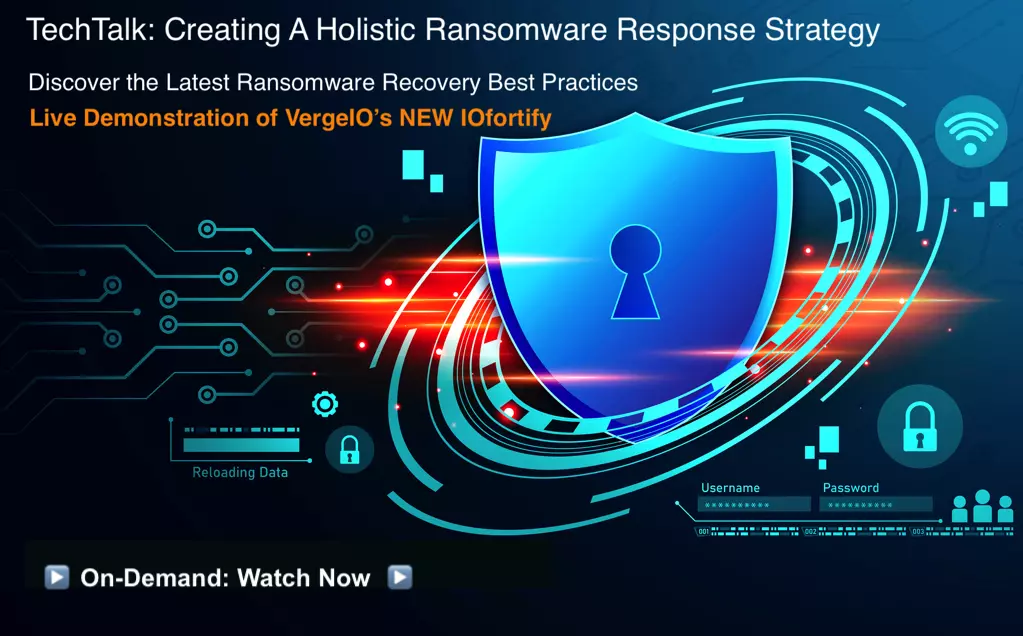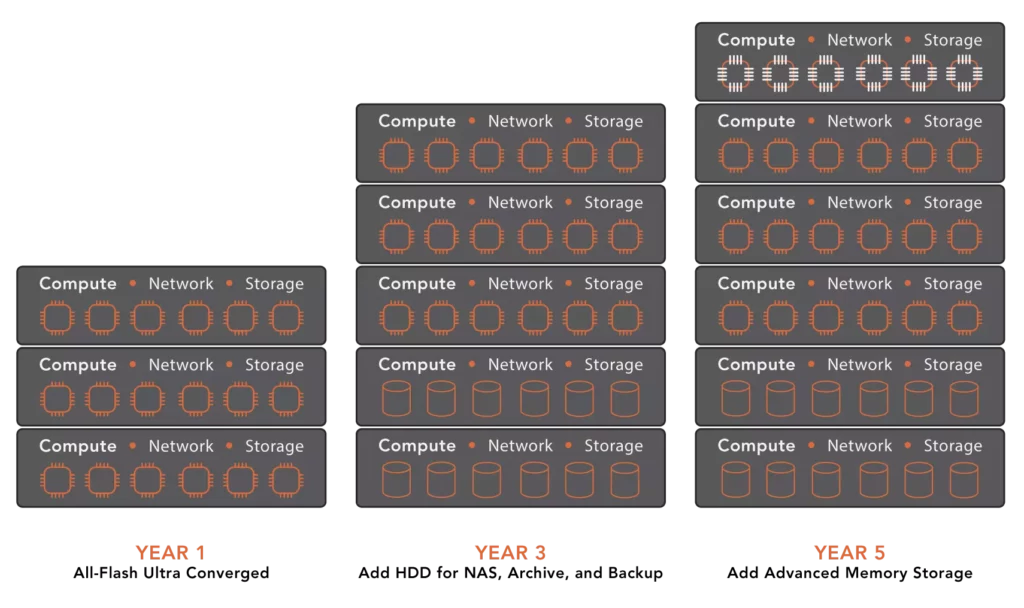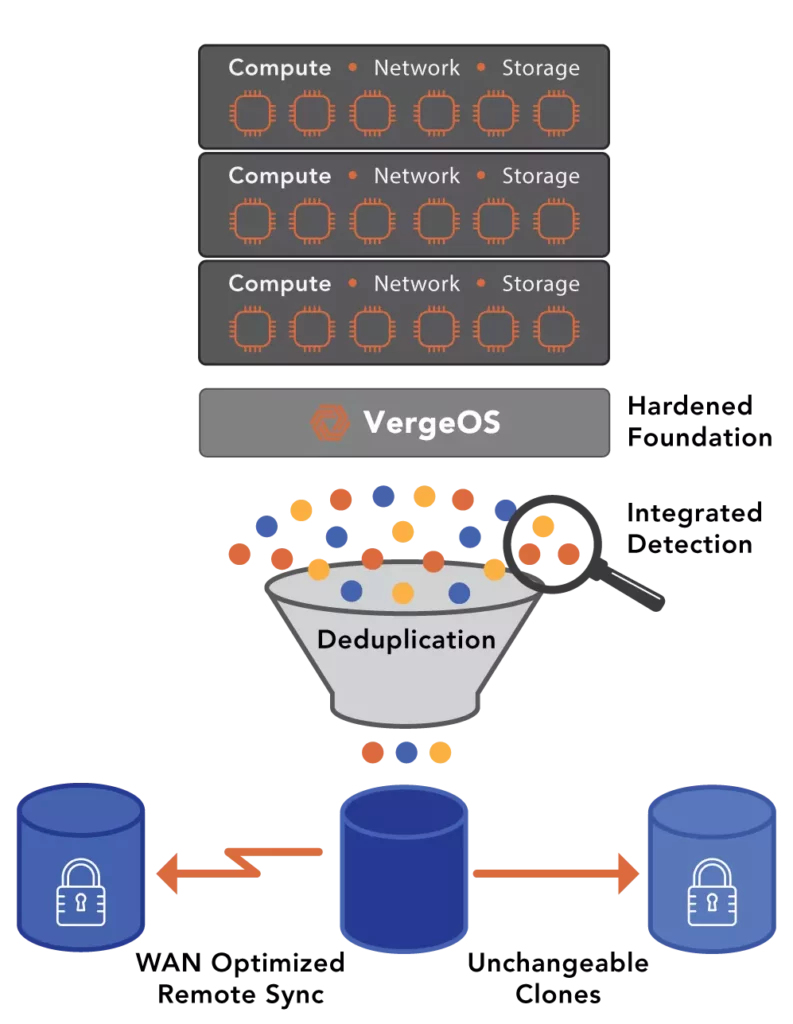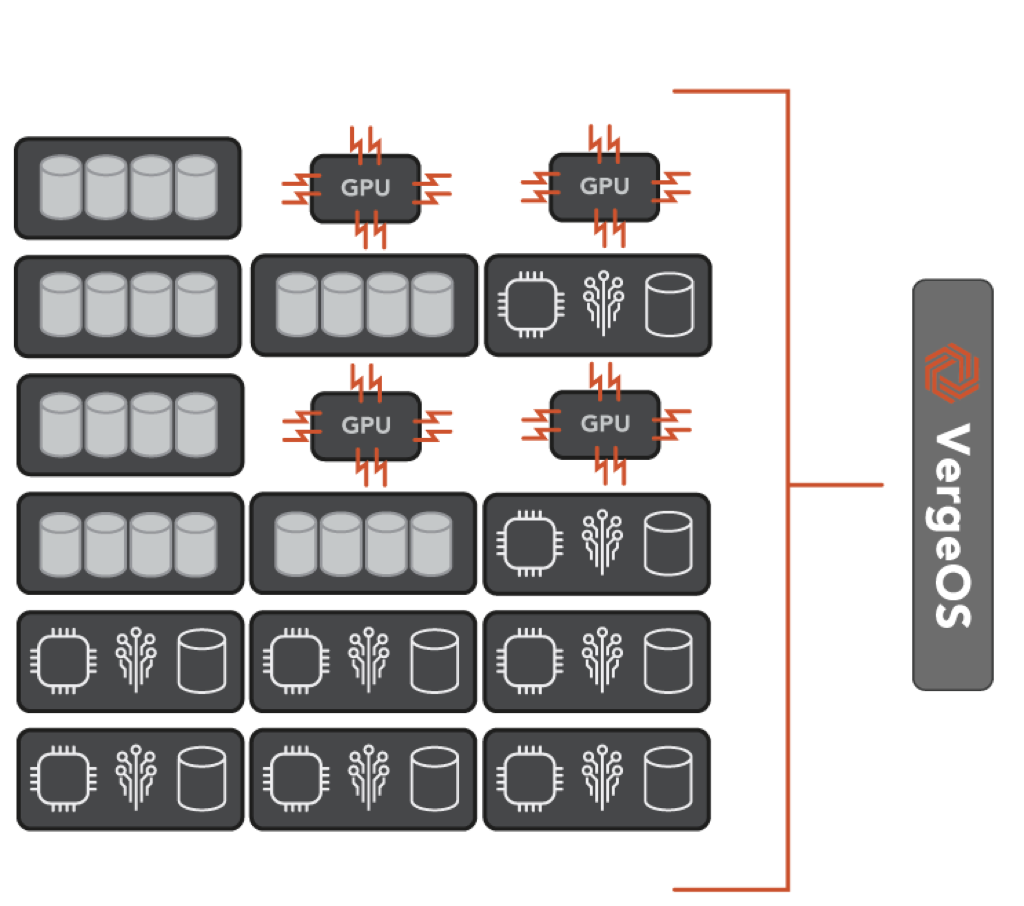VMware is coming under ever-increasing scrutiny for its ransomware shortcomings, and now customers are considering a VMware exit for ransomware resiliency instead of just to reduce licensing costs. The heightened concerns come from increasingly sophisticated cyber threats, and recent VMware vulnerabilities have been part of the problem.
In conversations with numerous VMware users infected by a ransomware attack, they often recount tales of belated attack discoveries, followed by intensive recovery efforts that take weeks, if not months, to restore their systems entirely. VergeIO has identified key ransomware shortcomings in the VMware environment, and offers a viable means to address them effectively by exiting to VergeOS.
So, how can IT professionals break this cycle?
The Infrastructure-Wide Approach to Ransomware Resiliency

Ransomware resiliency revolves around more than backup software and hardware. If you have to count on backups to recover from a ransomware attack, you are in for a very long and painful process. Counting on a separate, third party backup process as VMware does, is why customers are considering a VMware exit for better ransomware resiliency, in addition to trying to reduce licensing costs.
A more comprehensive approach to ransomware resiliency is required, focusing on:
- Limiting Attack Surface: This means not all virtual machines (VMs) are exposed, creating barriers between them. The Virtual Data Center (VDC) technology by VergeOS mimics this concept, bundling VMs, storage, and network configurations within a group of applications, creating a “walled garden” to contain potential threats. By default, it is nearly impossible for a malware trigger file to move between VDCs.
- Prioritizing Frequent Data Protection: Regular backups won’t suffice. Ransomware can encrypt data faster than most backup schedules can accommodate. This ability to deliver rapid, frequent data protection is where VergeOS stands out with its IOclone-based snapshot technology. It ensures frequent, space-efficient, and impact-free data protection. VergeOS snapshots are independent copies rather than legacy snapshots that are a cascading tree of dependence. With VergeOS, customers can execute snapshots frequently with no disruption to performance.
- Immutable Data Storage: Traditional backups can still be compromised. VergeOS ensures that IOclone-based snapshots are immutable and safe from ransomware intrusions unless deliberately changed to read-write by an authenticated Administrator. Malware may launch within a single virtual data center, but it can’t spread beyond it, and it can’t infect immutable protected copies, which can easily be only a few minutes old.
- Timely Patch Application: VMware Administrators often need help to apply patching timely, potentially exposing vulnerabilities longer than organizations would like. VergeOS uses its VDC and snapshot technology to allow quick patch tests, ensuring smooth deployments without disruptions. IT Administrators can clone the entire VDC into a “Lab” VDC and test the patch impact against the entire data center without disruption to production.
- Swift Ransomware Detection: Recognizing a breach early is crucial. VergeOS’ IOfortify technology swiftly detects potential threats, often within minutes, allowing for prompt action and containment. The recovery effort increases in complexity exponentially with each minute the attack goes undetected.
- Efficient Attack Victim Identification: Once contained, it’s vital to pinpoint affected VMs. VergeOS’ telemetry information, coupled with IOfortify timestamps, accurately indicates compromised systems for quick recovery. It enables you to focus on the few infected VMs instead of needing to scan every VM in the environment.
- Zero-Data Movement Recovery: VergeOS enables a near-instant recovery process, allowing IT Administrators to restore operations promptly without lengthy data transfer processes. There is no data movement. Bring up the most recent snapshot, scan for a potential trigger file, remove it if present, and launch the clone into production. There is no data movement.
- Detailed Forensics: Instead of hastily erasing infected datasets, VergeOS enables you to quarantine and retain them, offering valuable insights into the attack mechanisms and aiding with future prevention strategies.
- Robust Operating Environment: VergeOS stands out with its hardened operating environment, ensuring that its core remains unexploited, and in case of any breach, a quick restoration is possible.
Our newest white paper, Creating an Infrastructure-Wide Ransomware Resiliency Strategy, will enable you to create a strategy to help you recover from an attack within minutes and with no data loss —Download Now. Justify a VMware exit for ransomware resiliency in addition to reducing licensing costs.
Rethinking Infrastructure Choices with VergeIO

VergeIO’s focus isn’t a mere reaction to the ransomware challenges IT faces; it’s a well-thought-out strategy integrated into the core code base from day one. It ensures a fortified operating environment. When seeking a VMware alternative, cost savings are essential but not exclusive. If, during the VMware Exit, you can improve your ransomware resiliency, it makes the decision both compelling and logical.
Converting your VMware environment is painless and risk-free. Schedule a technical whiteboard session; our experts will walk you through the process.
Read about how ransomware infiltrated MGM’s infrastructure on 9/15/2023 encrypting more than 100 ESXi servers.
Watch as we protect, detect, and recover a VM that is being attacked by ransomware.






